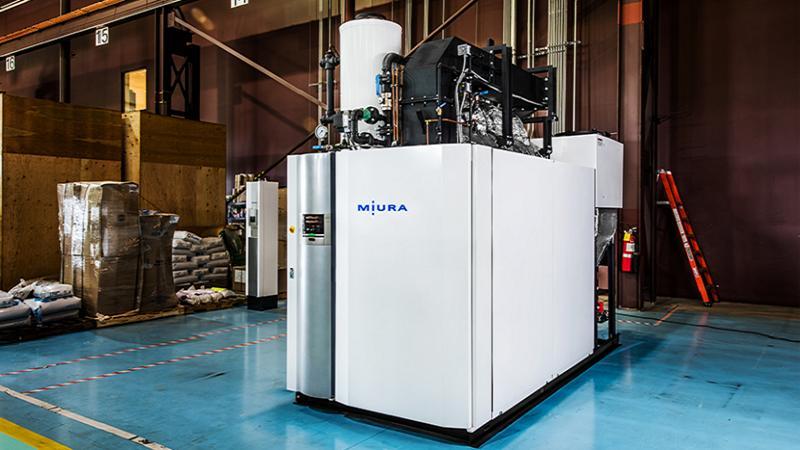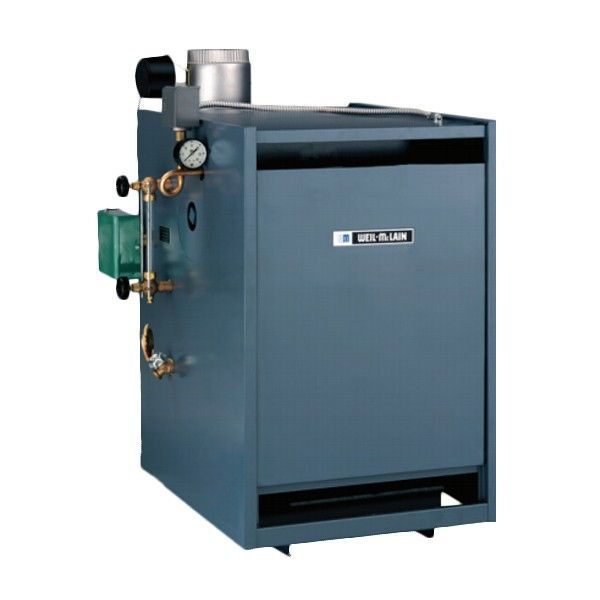In this article from Linquip, we will talk about the steam boiler system and help you understand them better with an easy-to-understand explanation. By the end of this article, you’ll be able to talk about steam boiler parts and function and have a general knowledge about steam boiler operation. If you are interested to know more about this boiler type, then continue reading to learn more.
What is a steam boiler?
If you want to understand the steam boiler system diagram, you need to know what a steam boiler is. The steam boiler definition is that it’s a type of heat exchanging system that heats the water to create the steam for the desired purposes. Steam boilers are closed vessels that contain water and fuel (which is usually coal) for the designed process.
Types of boilers for steam boilers are categorized based on different parameters such as contents in the tube, the position of the furnace, axis of the shell, etc. The most popular stem boiler types are Water tube boilers and Fire tube boilers. The water-tube contains tubes that heat the water inside them by hot gasses surrounding these tubes, while the water in the fire-tube type surrounds the tubes and the tubes contain hot gasses inside.
How steam boiler system works?
There are different designs for steam boilers but the principles of operation are almost the same in all designs. Since they work to reach a similar goal and their basic parts are pretty much the same.
This boiler heats up water to the boiling point with a combustion process. The combustion is done by using fuel sources. This combustion produces heat in a tube that’s submerged in water. The heat is rejected to the system as the “steam” which flows in the pipes that are connected to the outlet and the equipment that is being heated by the boiler. Steam boiler system helps to generate pressurized steam. Industrial steam boilers use this process to either maintain the process temperature or create comfort heating.
Steam boilers create a combustion reaction between air and the fuel to ignite a flame in the tubes. These tubes, as we already mentioned, are submerged in water and they transfer these produced heat to the water.
The hot gasses produced by the burner pass back and forth up to three times in the tubes for maximizing the heat transfer through the tube surfaces to the water in the boiler. When the water reaches the desired temperature to boil down at the provided pressure (also known as saturation temperature), it will produce bubbles of steam. These bubbles rise up to the surface of the water and then burst, releasing the steam into space above the water.
This process evaporates the water into steam for different applications. The steam’s heat then is transferred for the desired purposes, resulting in the steam condensing back into the water. The converting of the steam to water is called condensate. The water is then turned back to the steam boiler to be used once again. They are directed with a condensate return line designed for such purpose. The steam traps can efficiently collect the condensate for returning it to the feedwater tank. The condensate in this process gets mixed with fresh makeup water. The result of this mixture is feedwater which will be pumped back to the steam boiler at the needed time to compensate for water losses in the steam boiler system during blowdown and steam production. The quality of makeup water depends on the pressure range of the steam boiler system and the end use of the steam. It can be high purity demineralized water, softened water, or even raw water.
When the water is converted to steam, dissolved solids are left behind in the process. Some of these solids are removed by blowdown for the concentrations in the boiler water to remain at the desired ranges.
If you want to maximize the efficiency of your steam boiler system, don’t forget regular checkups and regular maintenance to ensure a trouble-free operation, maximizing the efficiency and increasing the life expectancy of your boiler.
Steam Boiler Efficiency
The total heat that is exported by the outlet steam in the total heat that is supplied the fuel, has a number. The percentage of this number is called Steam boiler efficiency. The combustion efficiency and thermal efficiency are included in this efficiency as well. The steam boiler size affects the result of this efficiency. This number is somewhere between 80% to 88% percent for a typical steam boiler. Incomplete combustion, defective combustion gas, etc. can decrease the steam boiler efficiency result.
Comprehensive Investigation Through Thermal Insulation
The 5 Best Regular Boilers of 2021
The 9 Best Combi Boilers of 2021
The importance of water treatment in the steam boiler system
The main cost related to the steam boiler system is due to the energy that’s involved in converting the water to steam for the desired outcome. A water treatment program can be used to decrease the overall operational costs of the boiler system. So, to keep the efficiency of your boiler and to get the best out of your steam boiler, you need proper chemical water treatment. The naturally dissolved solids in the makeup water work as cancer for your system and can cause corrosion or scale. The scale, even a thin layer of it, can have a huge influence on the efficiency of the heat transfer process and decrease it to a great extent. Plus, it drives up the fuel costs, resulting in spending more than you should. This process keeps the dissolved solid concentrations below the defined threshold, maximizing the use of water without facing scale or corrosion. The right boiler blowdown procedure and water treatment can reduce this risk without any troubles.
That was all you needed to know about steam boiler system and how it works. Do you have anything to add to this article about steam boilers or your experience with these boilers? Then comment below and share your opinion with us. And if you have any questions about steam boilers, sign up on Linquip and our experts will help you right away.





